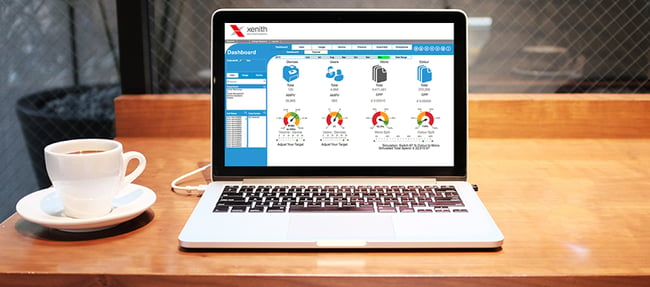Few businesses would waste time or budget on capturing data without a strategy for using it.
Research by Forrester suggests that 91% of data analytics is geared towards improving profitability and driving business growth by focusing on operational improvements.

This is to be expected, when you consider the many operational uses of business data:
- Regulatory compliance
- Optimisation of processes
- Improvements to the supply chain
- Maintenance scheduling
- Monitoring of security assets
The ability to analyse how a business could tighten up processes, serve customers faster and eliminate expensive productivity gaps is only possible if data can be attained through a next generation managed print services (MPS) program.
Here are the five most common uses and benefits of MPS analytics:
1) User analytics
Data collected by an MPS program should be capable of revealing behavioural patterns and anomalies among users.
By collecting data from various print management systems, user analytics spots areas of opportunity within the business by helping management identify when, how and where users undertake printing tasks, making it far easier to spot inefficient or unusual printing.
Some of the benefits of User Analytics include:
- Identifying and prioritising the most inefficient, wasteful or expensive manual tasks for digitisation and automation
- Eliminating wasteful printing.
- Apportioning costs to different parts of the company with ease
- Helping to identify possible areas to reduce costs and be more environmentally friendly i.e. printing dual sided or in black and white.
2) Document analytics
Why do users hit the ‘print’ button? Document analytics asks this question and identifies processes that appear to have a lot of touch points (which suggests they may be suffering from an inefficient workflow).
This form of analytics also looks at the fate of each document; is it stored somewhere, shared or simply shredded?
One of the core benefits of document analytics is helping to re-engineer inefficient processes rather than just creating the digital equivalent of an inefficient process.
3) Process analytics
Process analytics is more about creating the case for digital change by mapping your business’s current paper heavy printing processes and identifying inefficiencies.
It does this via a step-by-step approach that monitors printing/copying/scanning process activity and records the owners of each step. In this sense, it is similar to user and document analytics, however, the real insight arrives in the way process analytics can be used to map the time and costs associated with each process and measures the value returned.
4) Device analytics
Understanding the financial and environmental impact of your printer fleet is where device analytics excels, and it does this by relying on data derived from the devices themselves.
By identifying conditions such as device underutilisation and highlighting areas of the business that are spending too much on consumables, device analytics can help organisations reduce the total cost of ownership of printing gear and foster more sustainable printing practices.
The real benefits of device analytics come from:
- making sure your device to employee ratio is economical for the company (not too many devices or too few),
- ensuring devices across the organisation are evenly utilised,
- and ensuring they are located in convenient areas/walking distance for your staff.
5) Maturity analytics
Maturity analytics determines the current state of your MPS engagement and measures it against the core values of the business. This enables it to benchmark your organisation against industry peers and the competition.
By asking standard questions, maturity analytics can define a future state and road map for MPS, thanks to it’s ability to identify opportunities for improvement. Some of questions include:
- Does your infrastructure support your company goals?
- Does your infrastructure give you competitive advantage?
- Are you future-proofed?
With a great MPS analytics program, you can quickly identify inefficiencies within your current printing processes and create a roadmap for future improvement. For many, this will result in setting a goal for digital transformation.
For further insight into the benefits of MPS analytics, we’d recommend watching the following video, which features Newfield IT General Manager, Kevin Conder. He discusses the three stage process for introducing digital transformation and offers great advice for businesses struggling to convince employees of its benefits. You can watch it here.

